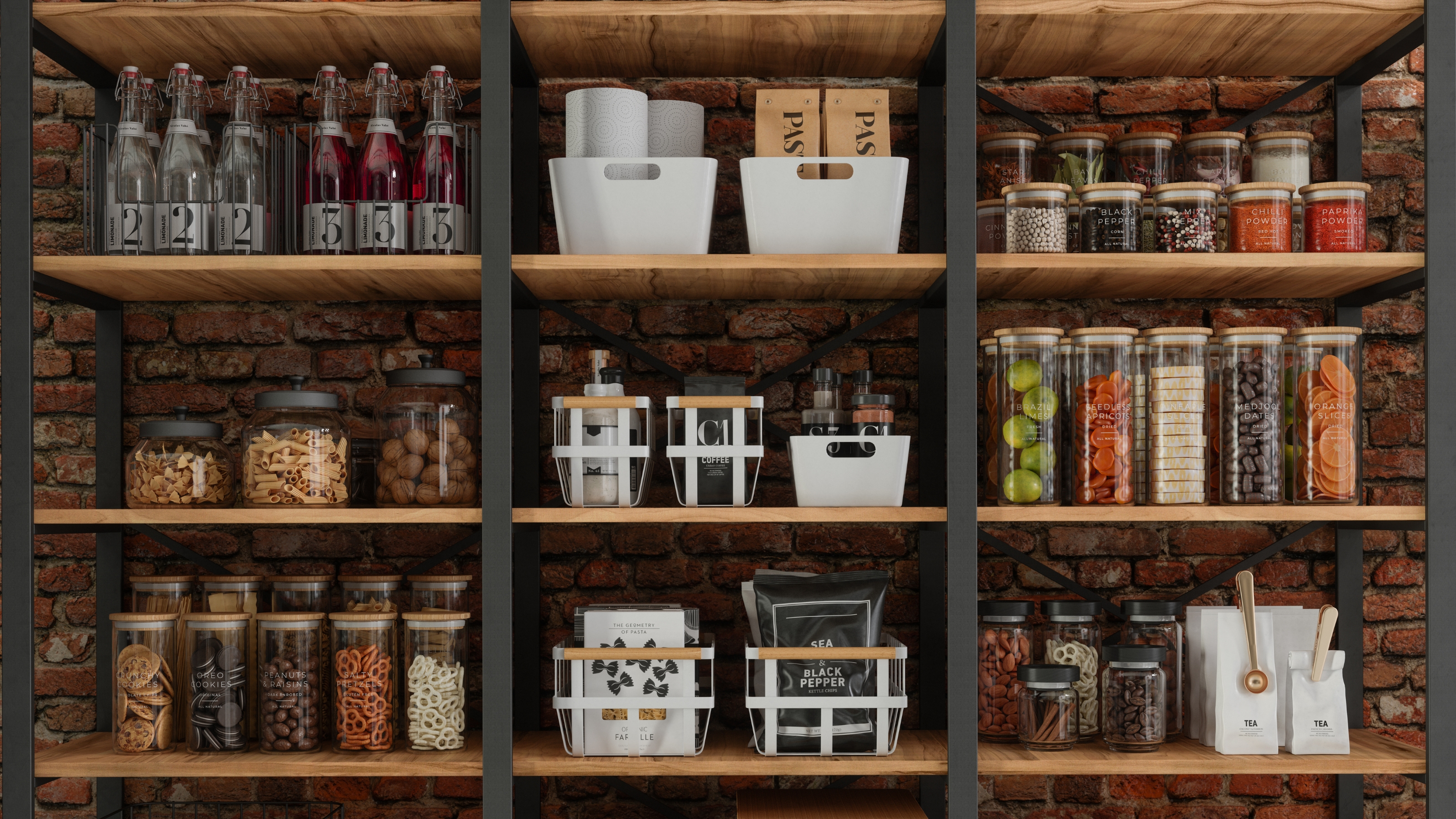
Knowing how to organize deep pantry shelves ensures you're making best use of your space, whilst helping to streamline cooking and avoid overbuying. For space-starved homeowners or renters, pantries are prime kitchen real estate and maximizing its utility is a must.
We've spoken to the professionals about how they organize deep pantry shelves, so you can understand exactly how to approach the task, optimize every square inch of space and the clever industry tips the pros use to sort out messy pantries.
If you’re on the hunt for ways to organize a kitchen so cooking for one, two, or a hungry crowd is stress-free, these 10 expert strategies for organizing deep pantry shelves will make your essentials easy to locate, track for refills and more.
How to organize deep pantry shelves
Organizing a pantry is easier if you have deep shelves (typically, pantry shelves are around 12 to 16 inches deep) and these 10 tips from professional organizers and interior designers will help you get the most from this brilliantly functional storage area.
1. Go see-through
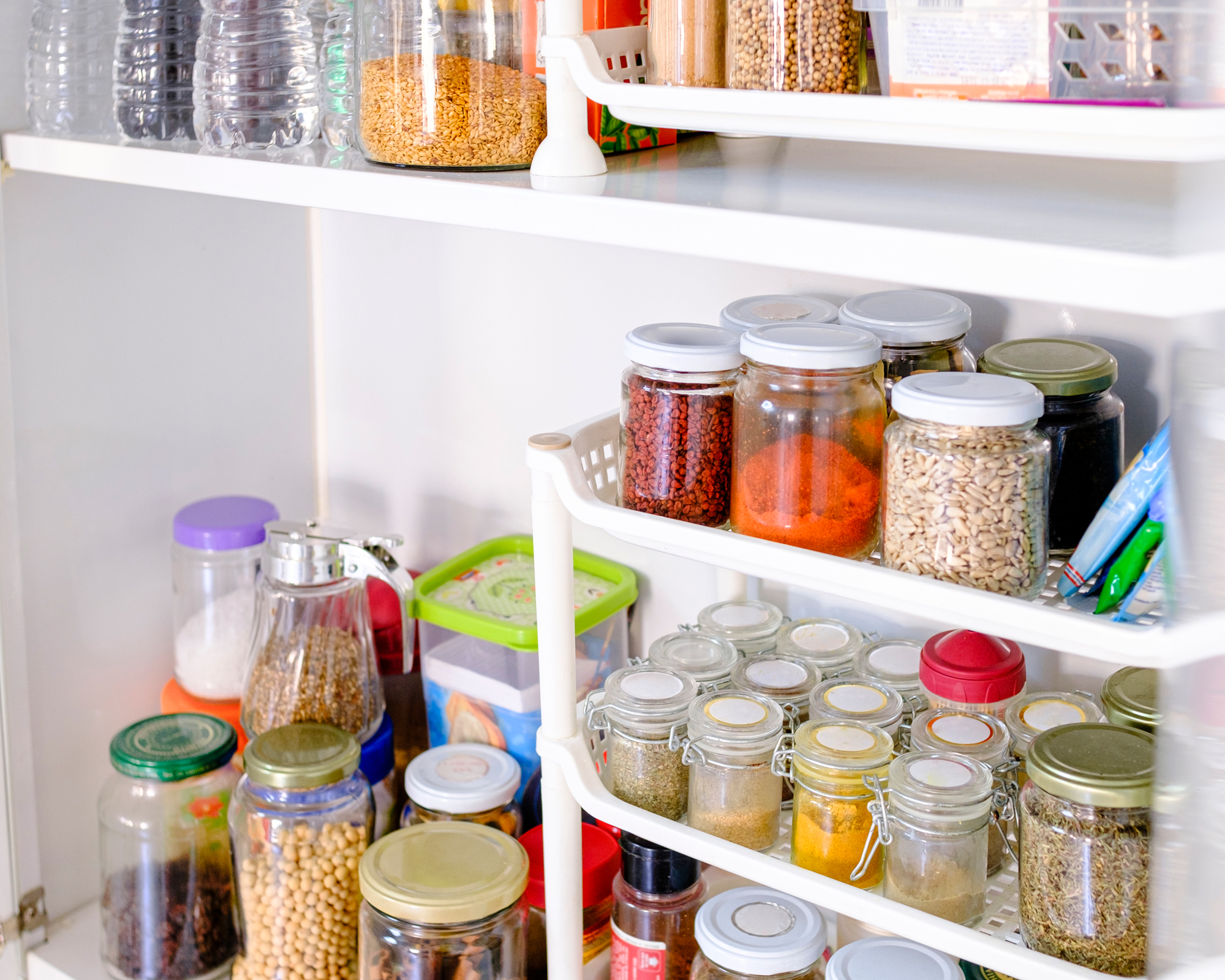
The issue with pantry shelving ideas when the space is deep is that it’s easy to lose track of what’s in there. But choose clear containers and your view is much improved.
“Clear containers are super helpful when looking for something specific, which you almost always are when entering the pantry. They're very helpful for keeping track of exactly how much of each item is left and and when to purchase more,” says interior designer Chantelle Hartman Malarkey.
“This helps avoid overbuying and therefore overloading your pantry with a ton of bulk purchases. Clear containers (such as The Home Edit by iDesign stacking pantry bin from The Container Store) let you see what’s inside and also help the space look clean, uncluttered and help you see way in the back.”
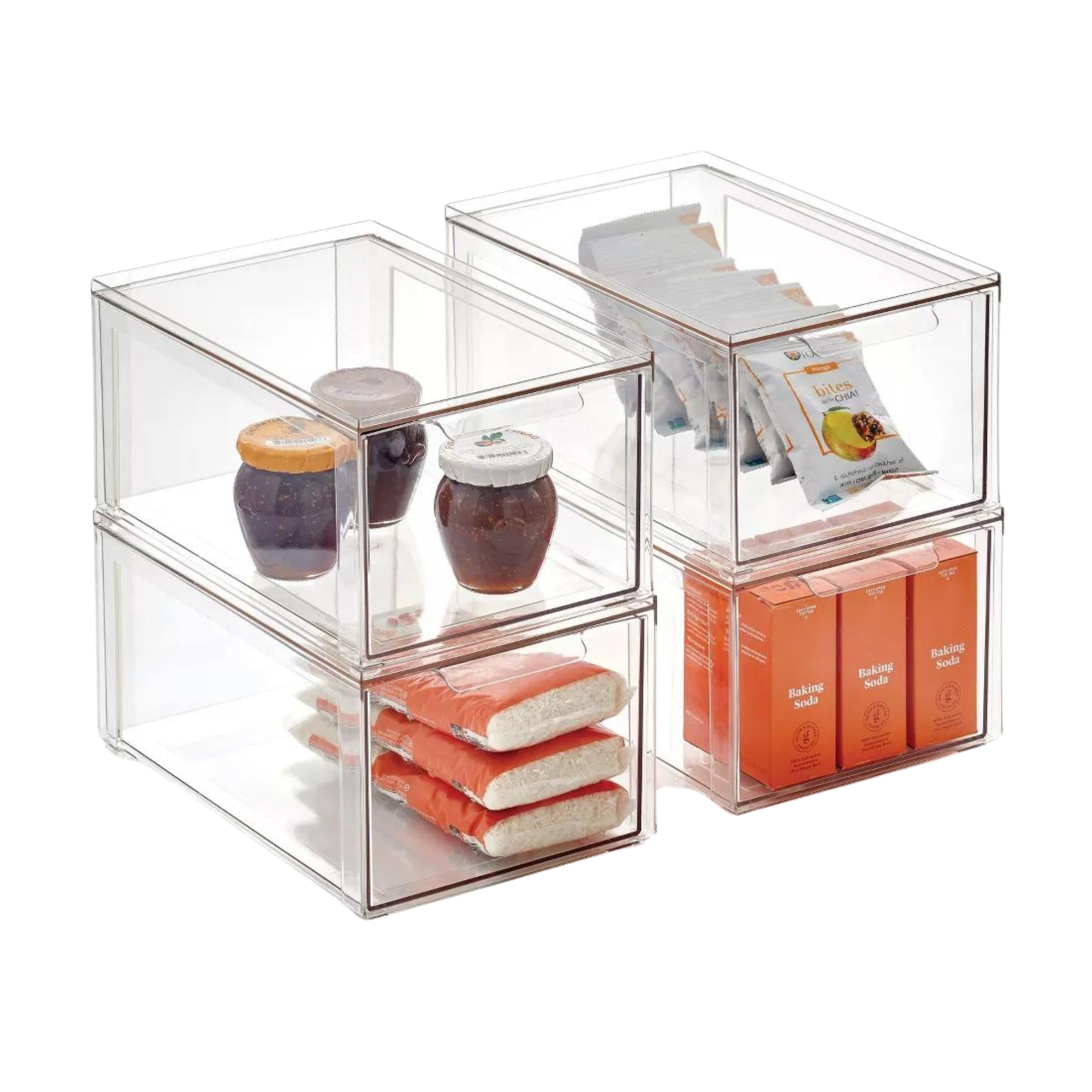
Price: $89.99
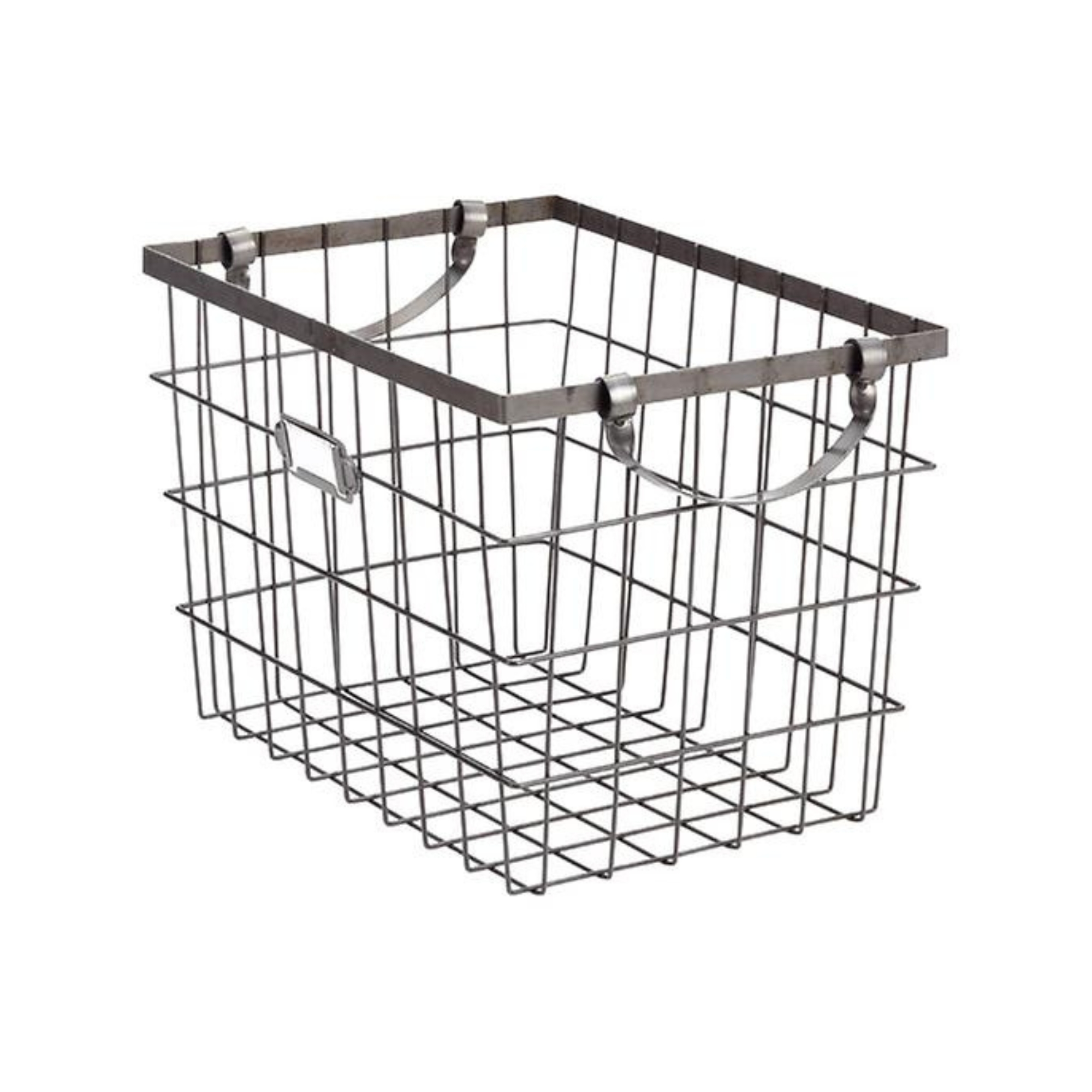
Price: $29.99
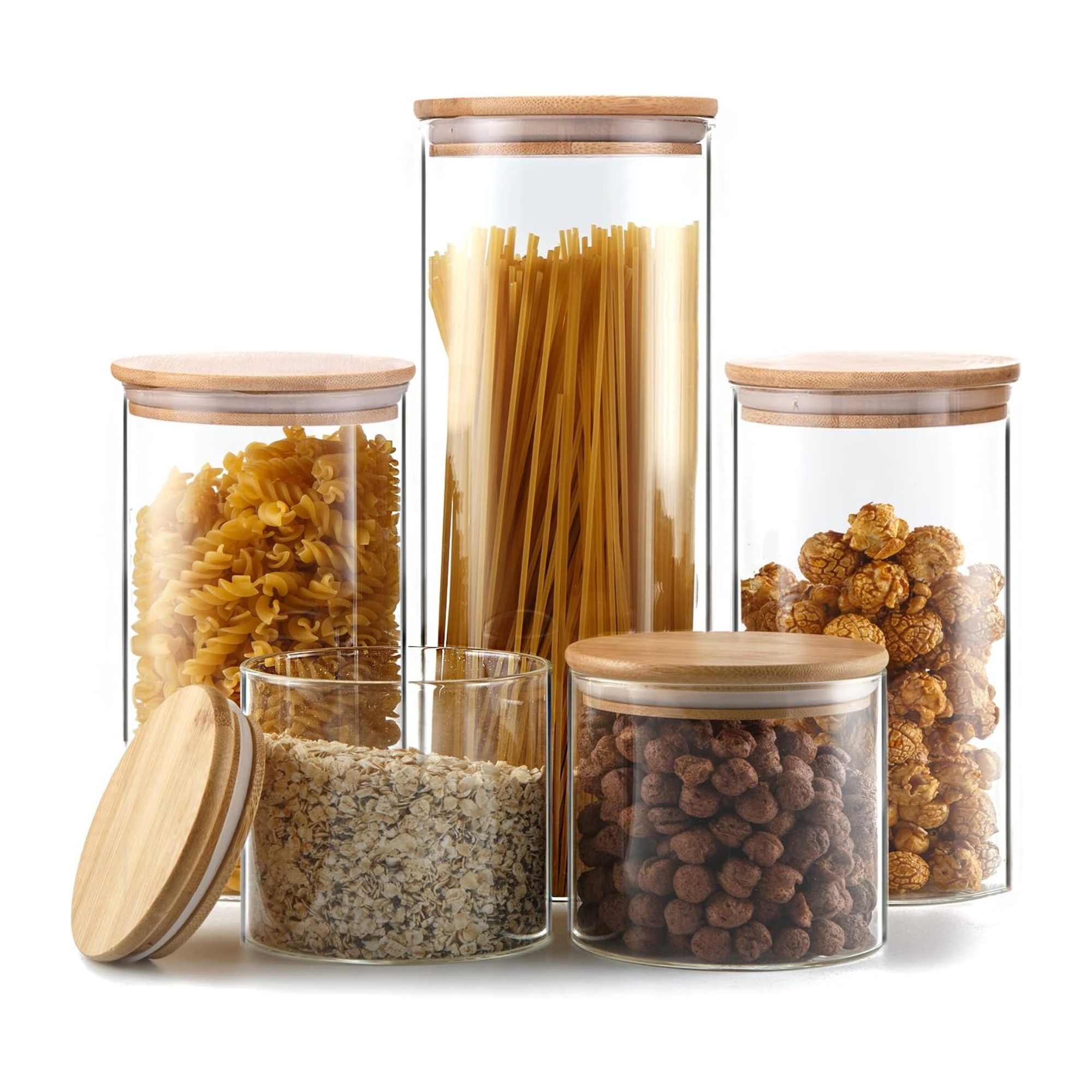
Price: $19.98
2. Opt for multiples

How containers fit together matters, whether you’re organizing a small pantry, or a large one with deep shelves.
Chantelle says, “Get multiple containers and bins in the same size so you can stack them together (such as these Brightroom™ stackable lidded plastic containers from Target), or in front of each other easily to create rows for deep pantries.
“This allows you to fit more items on the shelf instead of trying to mix and match containers together that create a cluttered puzzle. Not only does it look nice, but it’s the best use of space and the way to go if you have deep shelving.”
3. Label up
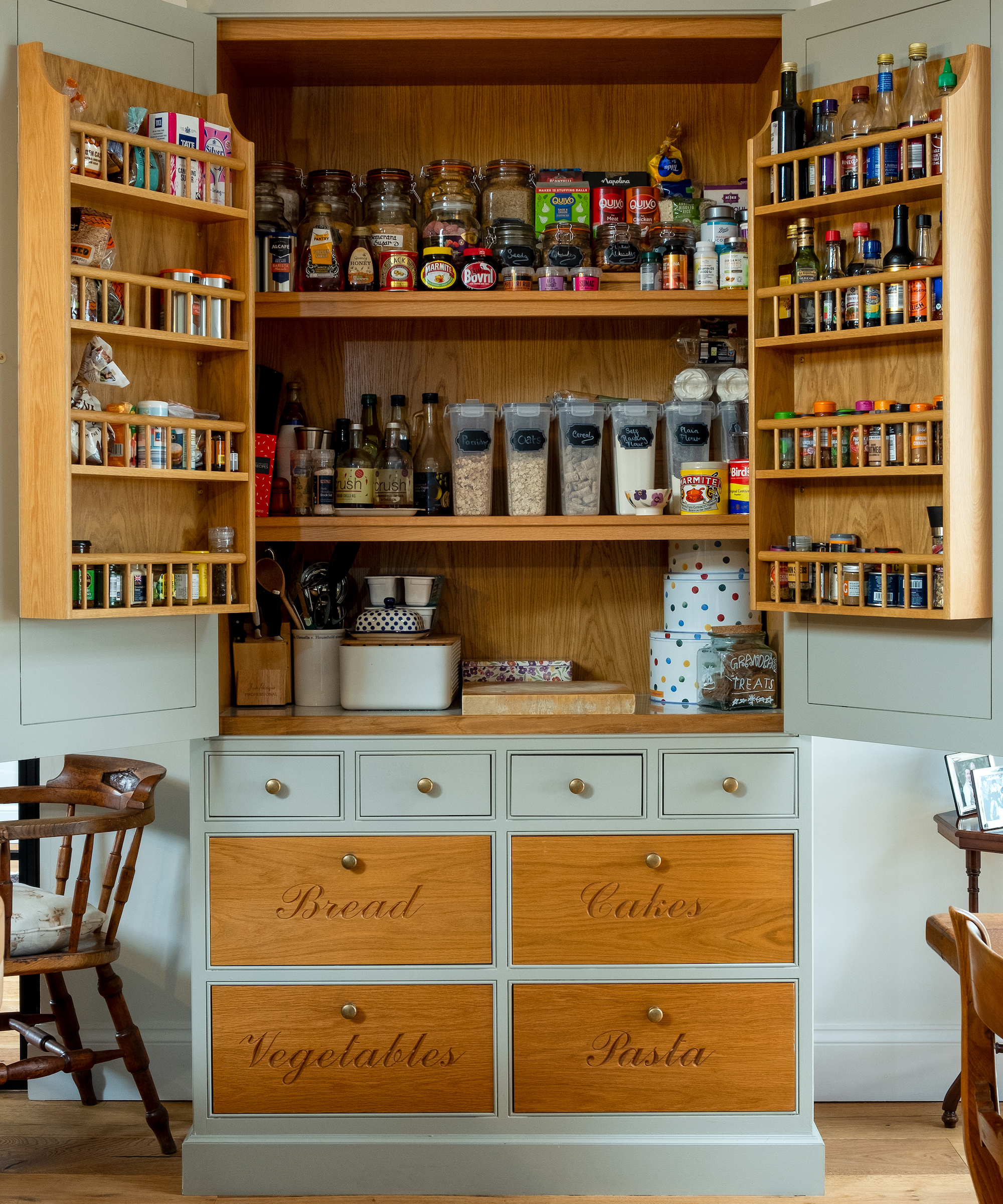
A concern with investing in containers that fit deep shelves is losing track of expiry dates. “If your containers allow, add expiration dates to the outside of the container for what’s inside since you are tossing the packaging,” says Chantelle.
“There is no way you are going to remember when things expire, so save yourself this hassle and add the dates to the labels. This allows you to keep food up to date in your pantry and nothing gets lost in the back.”
Using easy-peel labels such as MESS food labels for containers from Amazon will make it a breeze to swap out and update cannister info without that goopy, sticky, glue we all hate.
This way, decluttering a pantry won’t mean having to toss out expired foodstuffs you'd forgotten about.
4. Copy the supermarket

When organizing deep pantry shelves with items that can't be decanted, take inspiration from supermarket techniques for your kitchen storage ideas.
“Place items back to front, with the oldest items towards the front, and the newest towards the back,” says certified professional organizer Sara Bereika. “For example, if you have canned goods, store them one in front of another with the labels facing out."
After you've been grocery shopping, put the newest items you've brought home at the back of your pantry shelves. This will make it more natural to use up the oldest items first and avoid waste. Plus, you’ll always know what you have at a glance.
5. Try a lazy Susan

Another way to avoid access issues on deep pantry shelves is to add clever pantry organizers, and a lazy Susan is a top choice.
“Lazy Susans help you get the maximum use out of the shelf depth,” says Mary Jo Contello, owner of Organized by MJ. “You can get lazy susans (such as the non-skid Copco lazy Susan from Amazon) from 10-20 inch diameters,” she says.
Bear in mind you’ll need to get the order right on a large lazy Susan. “You will want to put the most used items on the outside and any overstock or less used items in the middle,” adds Mary Jo.
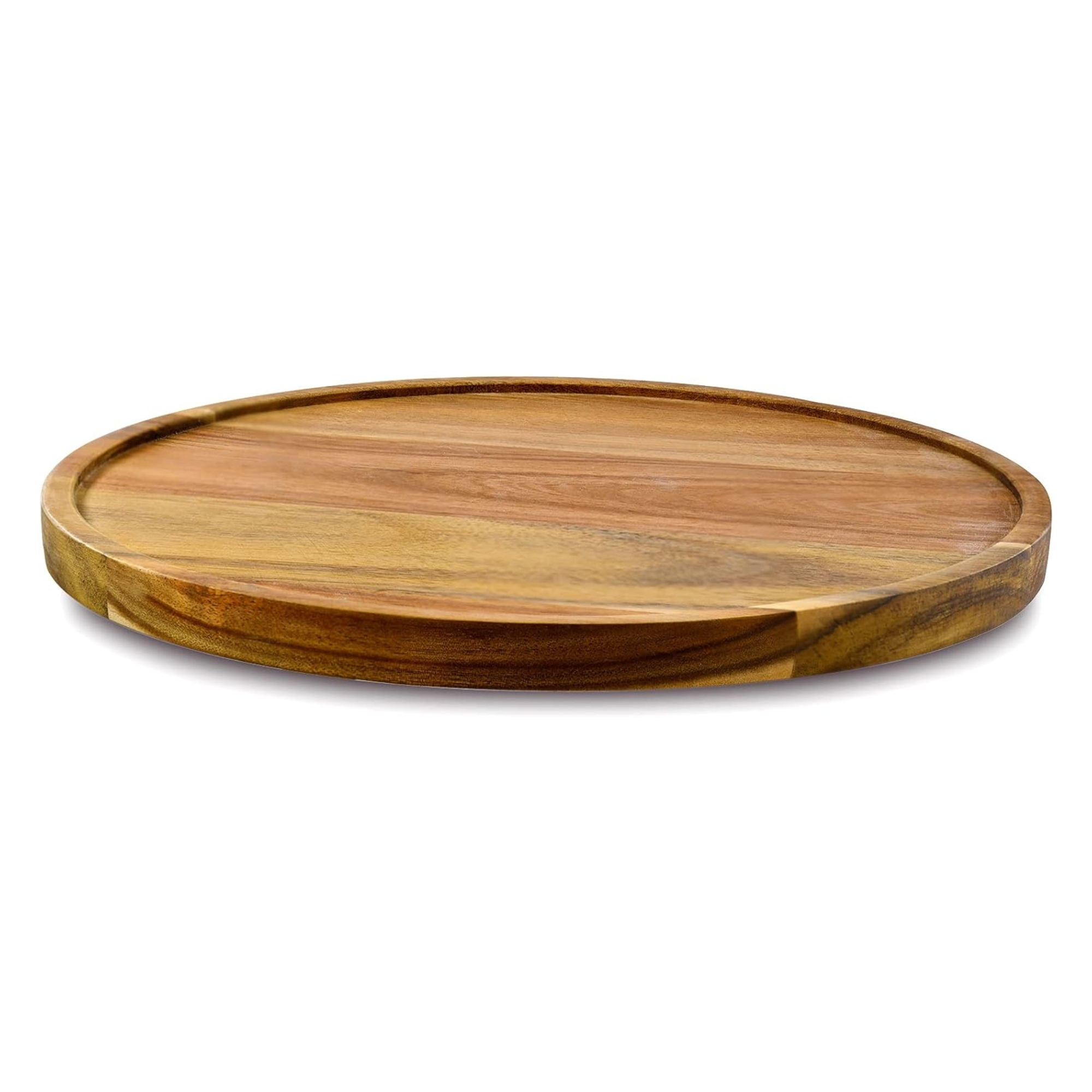
Price: $13.99
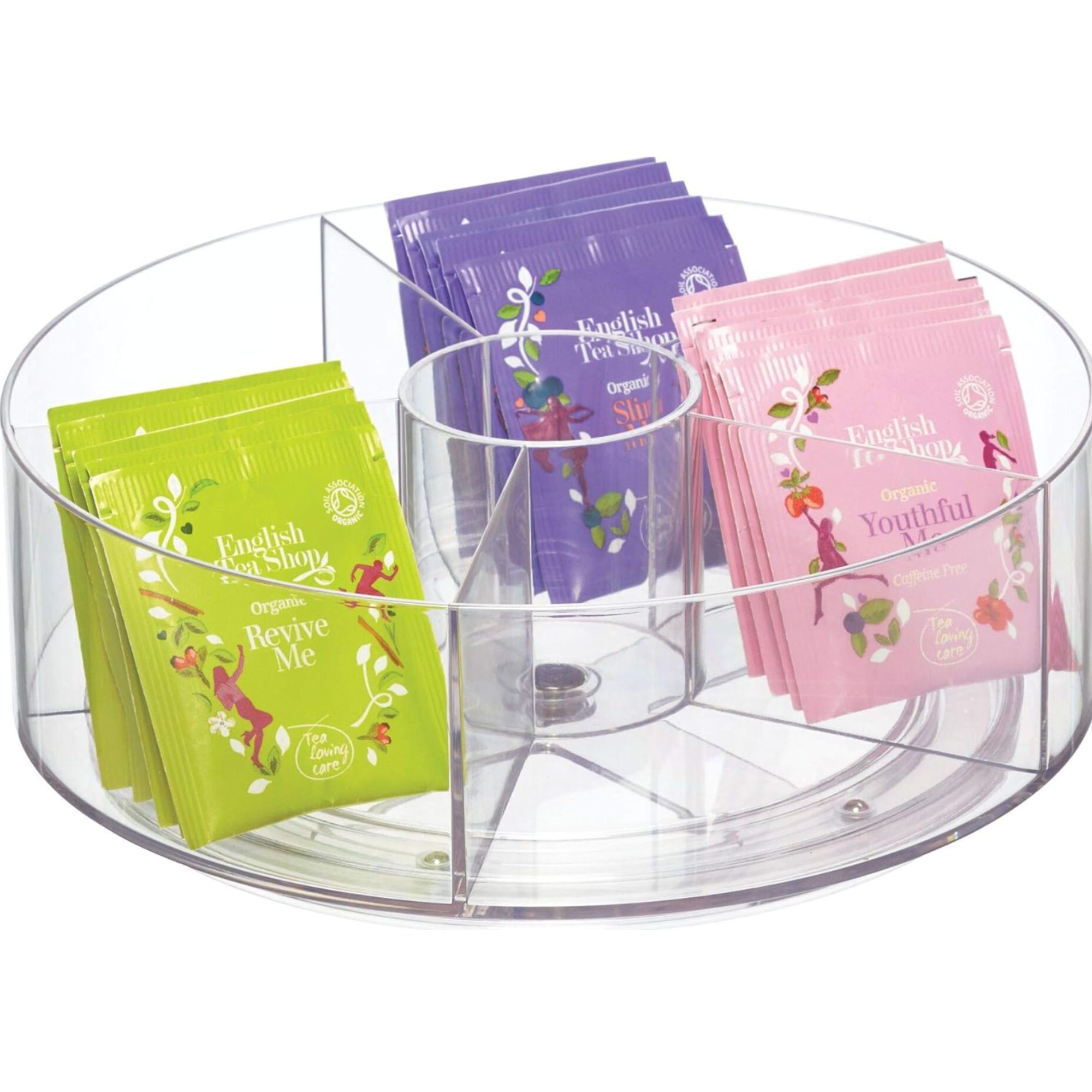
Price: $21.99
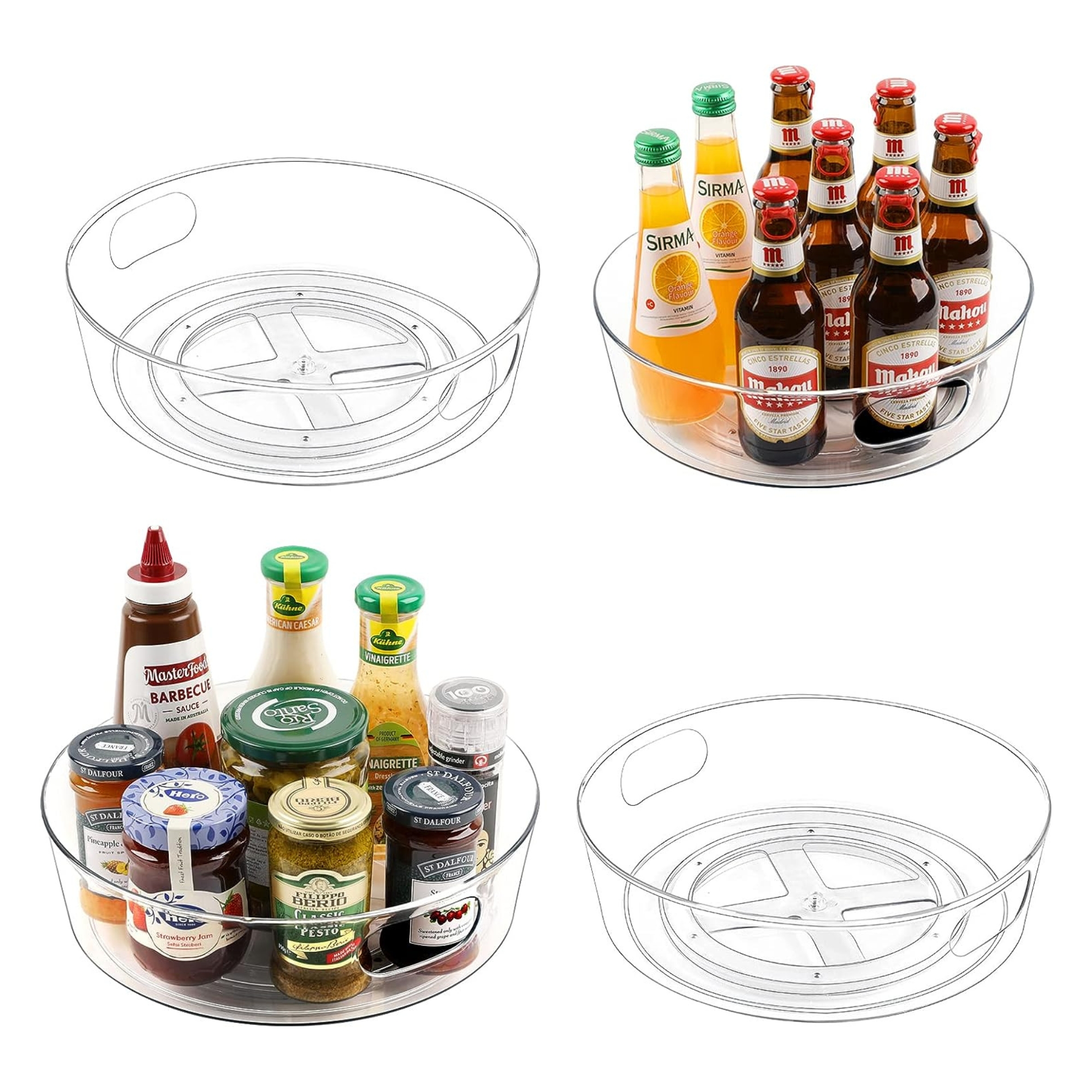
Price: $23.99
6. Divide with function in mind
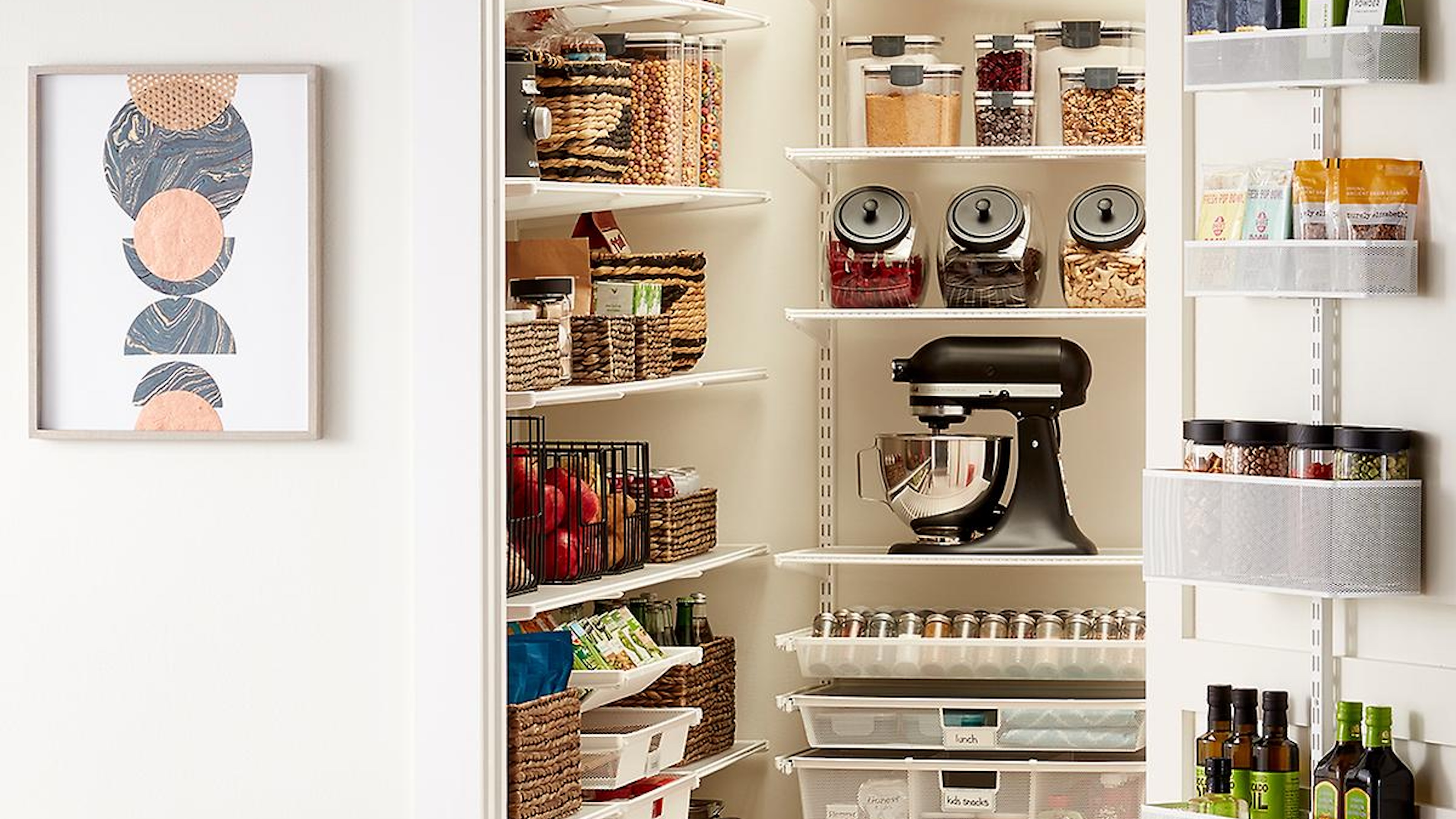
Deep pantry shelves are really useful for storing bulky kitchen items, so consider adopting a strategy of dividing food items from your best small kitchen appliances and allocating dedicated space to each.
“You might consider putting appliances and less-used entertaining pieces in the pantry, and utilize cabinet space for oils, spices, and other smaller items that could get lost in the pantry,” suggests Mary Jo.
7. Focus on access
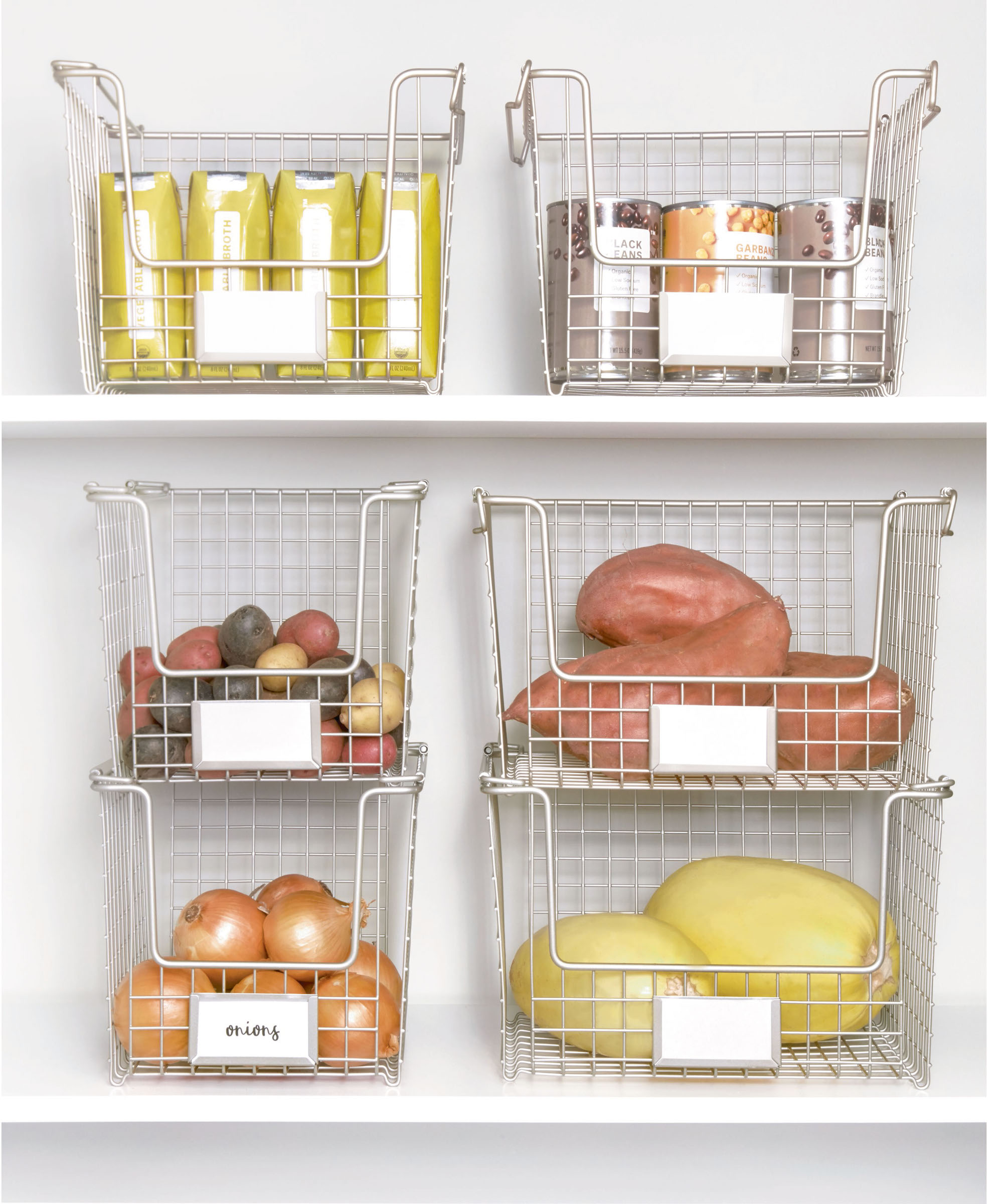
Reaching the back of deep shelves can be tricky, especially when they’re the highest or lowest in the set. If you’re maximizing space in a small kitchen, you won’t want to squander their potential for a lack of access.
“I recommend installing pull-out shelving, as this makes everything easily accessible,” says professional organizer Amélie Saint-Jacques of Amelie Organizes.
“If that is not feasible, then consider deep bins (such as the clear iDESIGN Linus large deep drawer bin from The Container Store). “That way, you can pull out a bin onto the countertop to access the grouped pantry items and put it back when you’re done."
You can also make use of bleacher-type shelving (such as this nifty expandable Expand-A-Shelf three-tier organizer from The Container Store) in the back, so you can at least see those items furthest away, no matter how small they are.
8. Optimize middle shelves
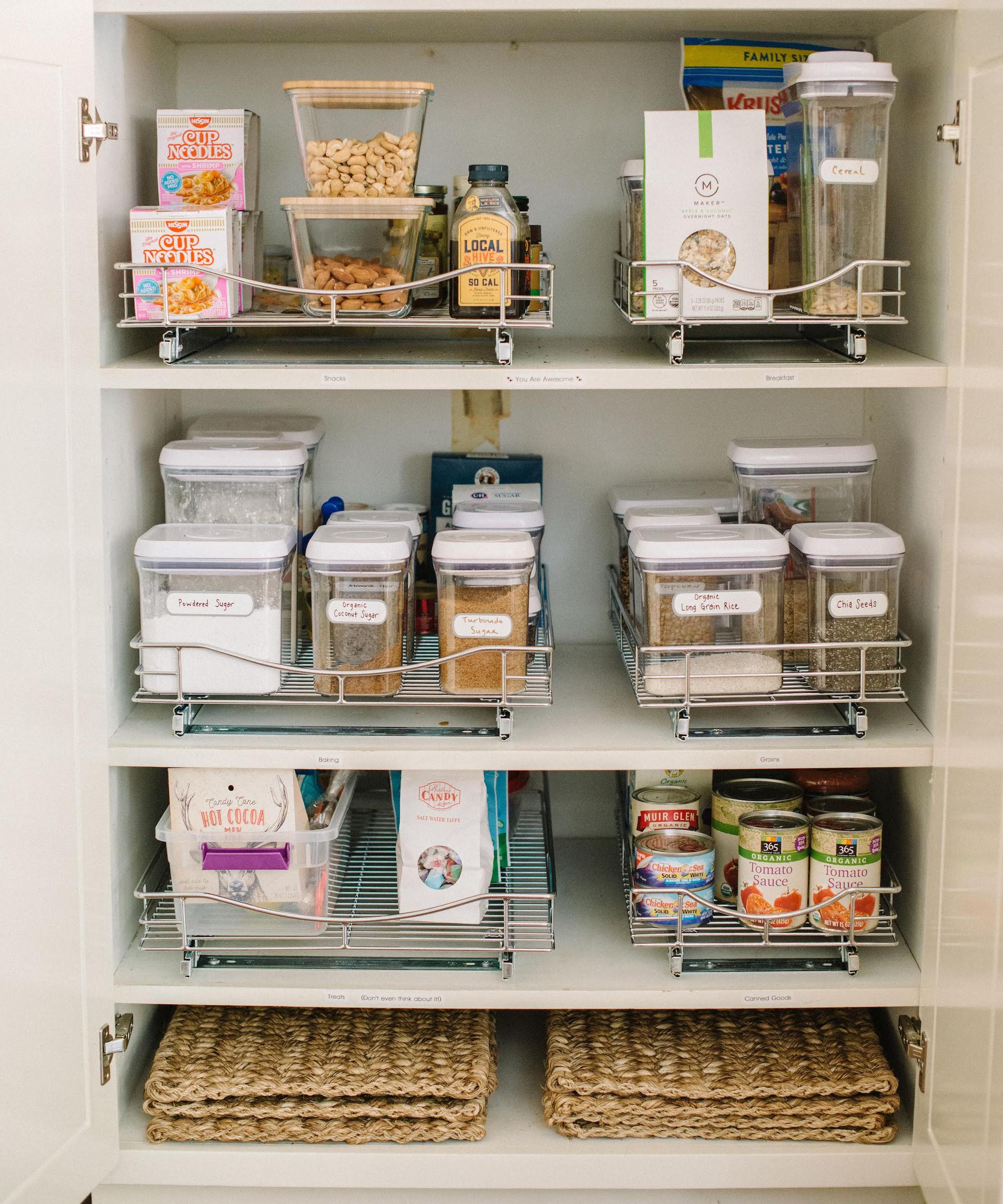
When organizing kitchen shelves including in the pantry, make the most of the valuable middle area as these are the easiest to access, especially when the shelves are deep.
“Use the middle shelves for your most commonly used foods (breakfast items, canned goods and snacks) and put less often used items up high or low,” says Elsa Elbert, founder of Composed Living. “I use the bottom shelf for large, bulky or heavier items, and the top shelves for backstock of lighter things, like paper towels.”
9. Create zones
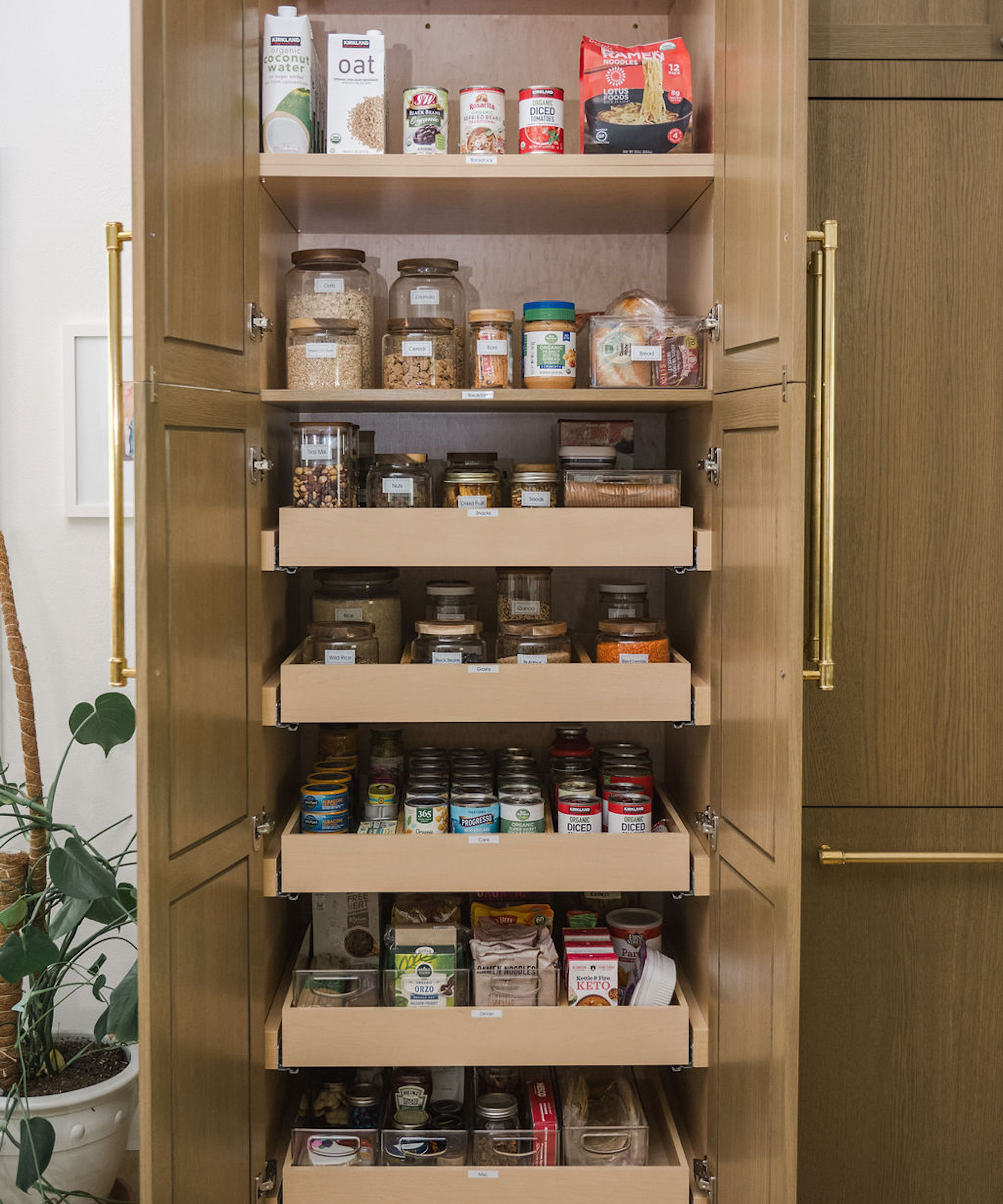
Just as you would when you’re organizing a small kitchen, consider zones to maximize the usefulness of deep pantry shelves.
“Creating zones is essential,” says Elsa. “It’s much easier to see what you have when all similar items are grouped together. Some of our favorite categories are baking, snacks, dinner, breakfast, sweets, spices, oils, and backstock.”
10. Avoid overfilling
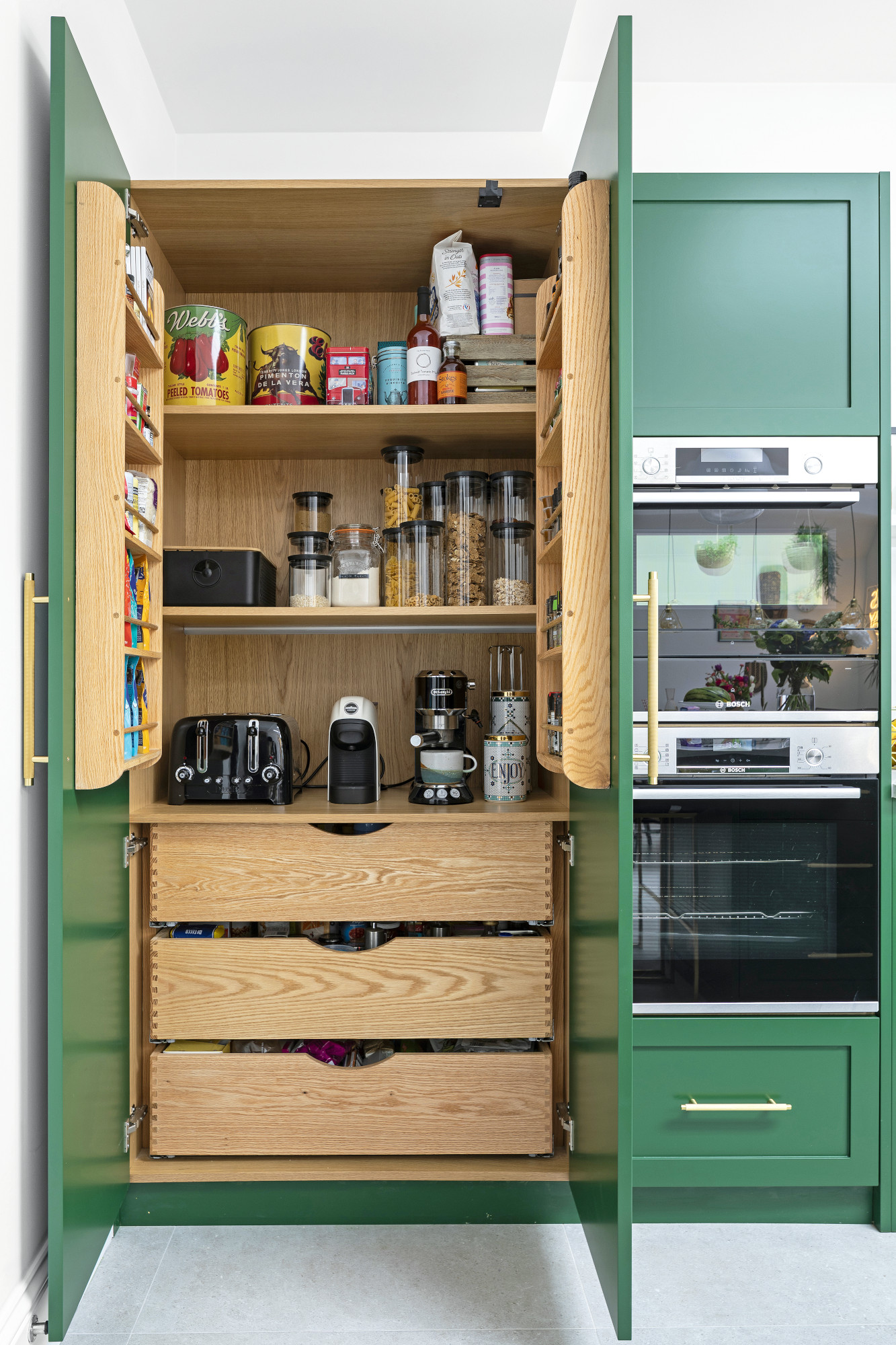
There’s a temptation to overfill deep pantry shelves just because there’s a whole lot of storage space there. But that won’t make items easy to access, so swerve overfilling to help avoid feeling overwhelmed by small kitchen clutter.
To curb the lure of packing out every inch of your deep shelves, add other smart storage solutions to the pantry.
“The inside of pantry doors can also be used for storage,” says cleaning and organizing expert Karina Toner. “Install door organizers to hold spices, small jars, or cleaning supplies. This can help free up shelf space and make items more accessible.”
Once your deep pantry shelves are well organized, it’s much easier to reduce food waste in your home. If you're in full organizational flow, use our expert fridge organization ideas next to keep the food in there fresh, too.







